Christmas in Italy
Natale in Italia
Christmas in Italy is very much a time for family and friends and the preparations, unsurprisingly concentrate around the selection, cooking and enjoyment together of wonderful home cooked food. The commercialisation of Christmas that has happened in other countries has yet to dominate the festive season in most parts of Italy, especially in the rural areas such as Maremma. And for that I am very happy and hope that it long continues to be the case.
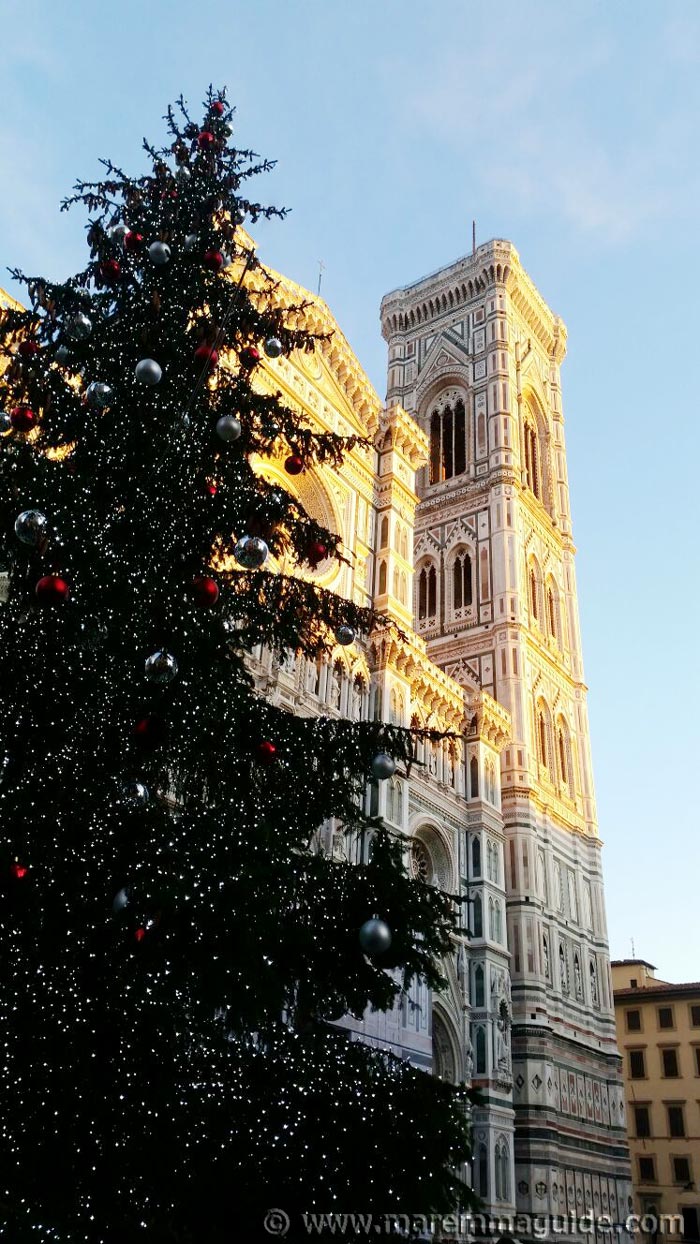
Christmas gifts are given - the children in Italy don't miss out! And when presents are given to friends and adult members of the family, they will tend to be the homemade food parcel type of sweets and biscuits.
Gifts that are made with love and attention, that are truly welcomed and eagerly shared. Nothing beats a prettily wrapped cellophane bundle of cookies made by "Nonna" (grandmother).
And, again, as it is Italy, the wrapping and presentation of gifts is something that has to be seen to be appreciated.
One of the first things you might notice when living in Italy is that even a small selection of cakes or biscuits or a slice of jam tart, "Torta di Marmellata", purchased from a patisserie or the bakers counter of a supermarket, are wrapped in wax paper and tied together with ribbon.
But at Christmas time the importance of presentation in all things in Italy takes on a whole new abundance and practically anything you purchase from the beginning of December will be gift wrapped and ribbon tied. You'll be hard pressed to purchase a wrench without the store owner offering to wrap it for you!
Visit any local toy shop and wander to the back and you will see piles of presents already pre-wrapped, from bicycles to dolls, all awaiting collection on Christmas Eve by the parents of the lucky children. And as family members and relatives pop in to purchase something from a child's Christmas list held by the shop, the pile grows. I think I am one of only a few who purchases her own wrapping paper and tags and hides presents in the back of cupboards (but don't tell)!
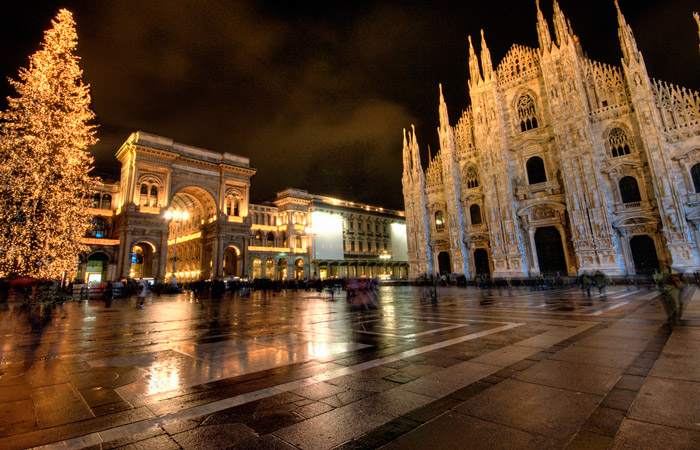
Last minute Christmas breaks in Italy
The best deals and discounts
Whilst Christmas is usually given over to family gatherings and the New Year to those with lots of friends, if you are looking for a last minute Christmas break in Italy visiting during the festive season you don't need to worry about being left out cold in the side lines. The Italians natural warm hospitality and natural penchant for fitting more around a table and still ensuring all have plenty to eat with ensure you return home with fond memories.
The best deals at the time of writing - beginning of December - can currently be found on the Booking.com. If you haven't visited their web site before, although you'll find nearly every hotel there is in Italy listed, you'll also find villas, farmhouses, apartments and bed and breakfast accommodation. Browse the latest offers.
Booking.com
Christmas traditions in Italy
Christmas traditions in Italy, including the dreaded brodo! And why you'll be wearing red knickers on New Year's eve!
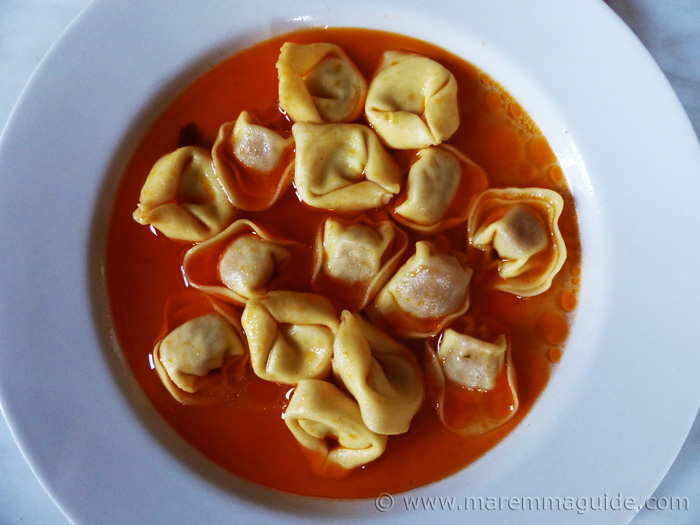
The Italian Christmas Holidays:
"le vacanze Natalizie"
The Christmas holidays in Italy are called "le vacanze Natalizie" and for Italian children they usually start at around the 22 of December of each year and run until just after the children's witch "La Befana" has visited on 6 January in the New Year.
The date of Christmas Day - "Il Natale" - in Italy is 25 December.
Christmas Eve - "la vigilia di Natale" - is on 24 December.
And Boxing Day - called "la festa di Santo Stefano" - is on 26 December.
National holiday days comprise Natale and Santo Stefano, plus New Year's Day, "il Capodanno", and "Epifania", Epiphany, on 6 January.
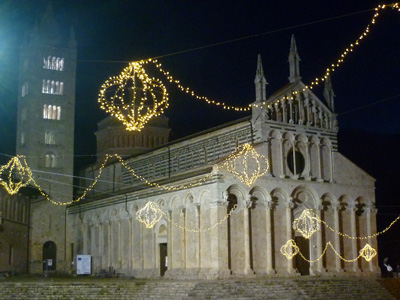 Italian Christmas lights in the cathedral square in Massa Marittima, Maremma
Italian Christmas lights in the cathedral square in Massa Marittima, Maremma
Traditional Italian Christmas food
I'm going to try my best to help you savour the tastes and delights of Italian Christmas food from my part of Italy: Maremma in predominately Tuscany with some northern Lazio thrown in. And more than a sprinkling of flavours and traditions from the beautiful Tuscan cities of Firenze (Florence) and Siena, whose continual battle to reign of Maremma during the middle ages left its mark, not only in the number of hill top fortifications that were built and the legends they spawned, but also in the food that we eat today.
Italian Christmas Cookies:
only your true love will let you eat the last one!
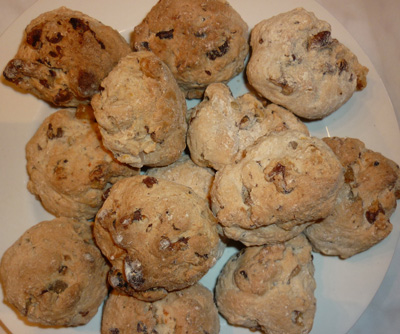
These authentic Italian Christmas cookies may originate from medieval Siena in Tuscany just a short drive from the borders of Maremma, but that does not mean that the recipe requires anything you cannot easily put your hands on or that it will disappoint: quite the contrary! These dried fruit and spicy biscuits are made throughout Maremma and Tuscany for Christmas - including in what was Siena's rival city in the middle ages, Firenze, by our "Nonna" (grandmother) and her friends - and will leave you wanting for more! Just as the last Rolo advert used to say, only your true love will give you the last one!
The Italian Christmas cookies recipe (and it's easy!).
Italian Almond Cookies
- really easy to bake and very moorish
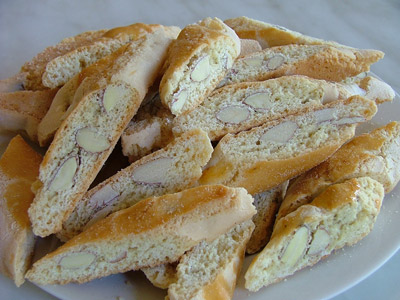
Really easy to bake and one of the very best Italian cookie recipes you will ever try, these Tuscan almond cookies are made for dipping in sweet Vin Santo wine or caffe at the end of the meal. They keep for ages and can be transported without breaking-up, but I bet you have to make a second batch straight away before you can contemplate doing either! They make for perfect homemade gifts as well.
An Italian Christmas Dessert from Maremma with a legend
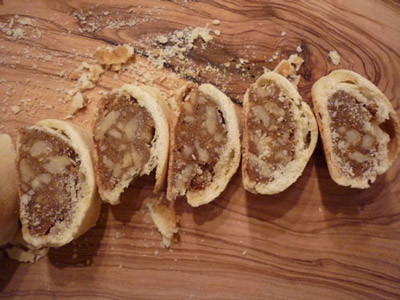
This wonderful warm honey and walnut Italian Christmas dessert is handmade in the tufa hill town of Pitigliano in Maremma and is now included amongst the protected Slow Foods of Toscana. In all probability the recipe dates back to Etruscan times in Maremma, but it is for its current shape and ingredients originating from the seventeenth century that it is famous in Maremma. The story it tells, and the really easy recipe.
Italian Christmas Cakes: Panettone, Pandoro and Panforte
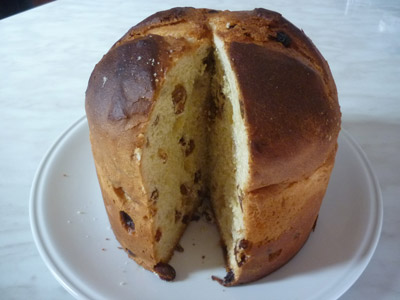
Italian Christmas cake is a much lighter version than the liqueur soaked dried fruit variety that I was brought up on in the UK and still love, and is eaten in huge skyscraper high wedges!
Both Panettone and Pandoro are traditional sweet breads made with yeast and, whereas Panettone is traditionally made with "uve" raisins, or candied citrus orange lemon and lime citrus peel, Pandoro with no fruit in it, but covered with a liberal dosing of vanilla flavoured icing sugar. Or, as is increasingly the case, filled with chocolate sauce, lemon sauce, both!, "crema pasticcera", or covered with profiterols... and all other unimaginable's! The choice gets worse each year!
At this point it is worth pointing out that - a bit like Marmite - you will find that the choice of with or without candied peel is black and white for most Italians: there is no middle road, they either like the or they don't. Which explains why most supermarket shelves clearly sign with "Con Candite" and without "Senza Candite" above the mountains of Panettone.
Both can sometimes now also be found in the freezer cabinet... find out why and more, plus a recipe to make your own for Panettone in my sweet Italian Christmas bread page.
And for the piece di resistance...
Panforte di Siena
My absolute favourite in its every form and varied secret guarded recipe: this Christmas cake I readily eat on other occasions and just for a treat with a cup of coffee!
No artificial flavours or colourings in this delight and with its ingredients of combinations of honey, sugar, almonds, various fruits from melon to figs and spices... and a dusting of icing sugar, "zucchero a velo", plus occasionally chocolate (did I mention there is a chocolate variety?!).
Italian Christmas dinner
A traditional Italian Christmas dinner in Italy is a long meal of many many courses that will start around noon and take you through until late afternoon: I kid you not!
Most of us have trouble keeping-up after the first courses (note the plural!) which, in Tuscany, will almost invariably include a plate of lasagna that on any ordinary day would be enough to fill any ones appetite.... Luckily for our waistlines! many families, ours included, stick to just seven courses! that start with some mixed antipasti, will include a brodo (that I hate! but which every Italian and my own little one love!) and end with fresh fruit of wonderful mandarins and clementines, with dried figs and dates stuffed with walnuts, panforte, mini biscuits and chocolates... and some sweet Italian wine.
If you're not visiting friends or family, and you would love to experience a traditional Italian Christmas meal in the company of Italian families and their friends but without breaking the bank, then my recommendation would be to book in at a local Osteria or Trattoria.
Many family restaurants will open on Christmas day for lunch, "pranzo di Natale", where you can enjoy a true feast of Italian cooking. But you will need to book in advance. This Italian Christmas menu is for this year at a great Trattoria near Massa Marittima and will set you back all of €40,00 a head including drinks.
Eating well doesn't have to cost the earth in Maremma, even on Christmas day. An Italian Christmas dinner in Tuscany.
Italian Christmas Markets
- Mercatini di Natale
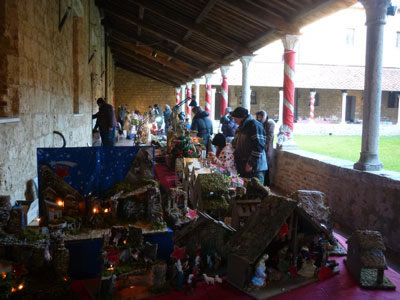
These Italian Christmas markets - "Mercatini di Natale" - in Maremma and surrounding Tuscany aren't anything like on the scale of those more famous elsewhere in Europe in Prague, Barcelona, Berlin, Tivoli in Copenhagen or the Christkindlmarkte of Vienna.
They are much smaller and more intimate affairs, where the offer from a stall holder to try one of his homemade Christmas biscuits will happily lead to a conversation about how he and his family collect the chestnuts from their woodlands to make the flour that is part of the ancient recipe together with the figs for the wonderfully tasting morsel now melting in your mouth...
And will remind you, if your heart and soul aren't already in tune, just how much food and its loving preparation plays an important role in everyday life here in Italy.
How to say Merry Christmas in Italian
All the Italian Christmas card messages and phrases you are likely to need and other greetings to see you well into the festive New Year (including what you might need to say on New Year's Day "Capodanno", if you have had one too many the night before! Merry Christmas in Italian.
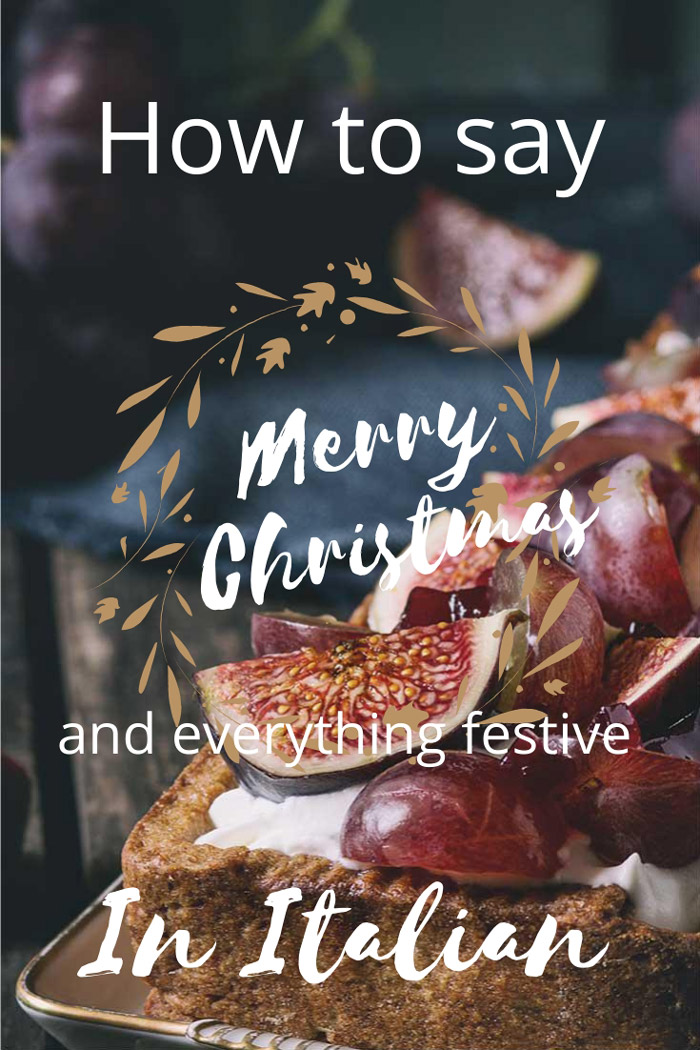
Explore some more...
















